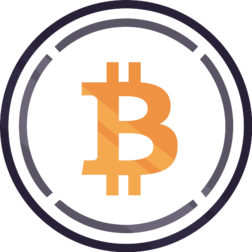Stellar (XLM) is a decentralized, open-source blockchain network designed for fast, low-cost cross-border payments and asset transfers. It aims to connect financial institutions, individuals, and businesses worldwide by enabling seamless transactions in multiple currencies.
1. What is Stellar (XLM)?
Stellar is a blockchain-based payment protocol launched in 2014 by Jed McCaleb (co-founder of Ripple and Mt. Gox). It operates as a distributed ledger that facilitates fast, scalable, and affordable financial transactions, making it ideal for remittances and financial inclusion.
✅ Key Features:
- Low fees (~0.00001 XLM per transaction)
- Fast transactions (~5 seconds per settlement)
- Cross-border payments with built-in currency conversion
- Decentralized exchange (SDEX) for asset trading
- Smart contracts and token issuance
2. How Does Stellar Work?
Stellar functions through a unique consensus mechanism known as the Stellar Consensus Protocol (SCP). Unlike Proof-of-Work (Bitcoin) or Proof-of-Stake (Ethereum 2.0), SCP enables faster and more energy-efficient transaction validations.
Transaction Process:
- A user sends a transaction via the Stellar network.
- Validators (nodes) reach a consensus using SCP within 2-5 seconds.
- The transaction is completed with minimal fees.
🔹 Federated Byzantine Agreement (FBA) – Unlike traditional blockchain mining, Stellar uses a trust-based system where nodes agree on valid transactions.
3. XLM: The Native Currency of Stellar
XLM (Lumens) is the native cryptocurrency of Stellar, primarily used for:
- Paying transaction fees
- Preventing spam transactions
- Facilitating cross-border payments and asset exchanges
💰 XLM Supply:
- Total supply: 50 billion XLM
- Circulating supply: ~27 billion XLM
4. Use Cases of Stellar (XLM)
✅ 1. Cross-Border Payments
Stellar enables low-cost remittances and currency exchanges without intermediaries like banks.
✅ 2. Decentralized Finance (DeFi) & Asset Issuance
Users can create and trade tokens, stablecoins, and other digital assets on Stellar.
✅ 3. Micropayments & Mobile Transactions
XLM allows for instant microtransactions (e.g., paying for digital content or services).
✅ 4. CBDCs & Banking Integration
Several governments and financial institutions explore Stellar for Central Bank Digital Currencies (CBDCs) and digital banking solutions.
Notable Partners:
- MoneyGram (USDC cash-out services)
- IBM World Wire (global payment solutions)
- Ukraine CBDC pilot project
5. How to Buy and Store XLM
🔹 Where to Buy XLM?
XLM is available on major cryptocurrency exchanges:
- Binance (registration with bonus)
- Coinbase
- Kraken
- KuCoin
🔹 Where to Store XLM?
XLM can be stored in:
✅ Hot Wallets (Online & Mobile) – Lobstr, Trust Wallet, Exodus
✅ Cold Wallets (Hardware) – Ledger Nano X, Trezor
✅ Stellar Account Viewer – Official Stellar wallet
6. Pros & Cons of Stellar (XLM)
✅ Pros:
✔️ Fast & Cheap Transactions (~5 sec & negligible fees)
✔️ Scalability (handles 1000+ transactions per second)
✔️ Strong Partnerships (IBM, MoneyGram, etc.)
✔️ Decentralized Exchange (SDEX) for asset trading
❌ Cons:
❌ Competition from Ripple (XRP) & other blockchains
❌ Centralization concerns (large initial token distribution)
❌ Limited smart contract functionality compared to Ethereum
7. Future of Stellar (XLM)
🚀 Upcoming Developments:
- Integration of Smart Contracts (Soroban framework)
- More CBDC & banking partnerships
- Growing adoption of USDC stablecoin on Stellar
📈 Price Prediction (Speculative):
While XLM has experienced market fluctuations, its long-term success depends on adoption, partnerships, and network improvements.
8. Conclusion: Is Stellar (XLM) a Good Investment?
Stellar is a strong contender in the blockchain payment space, offering fast, cheap, and scalable transactions. If you’re interested in cross-border payments, asset tokenization, or DeFi, Stellar could be a promising investment. However, always DYOR (Do Your Own Research) before investing.
🔥 Final Verdict: Stellar is a great blockchain for financial applications, but competition remains fierce. Its success depends on continued adoption and innovation.





